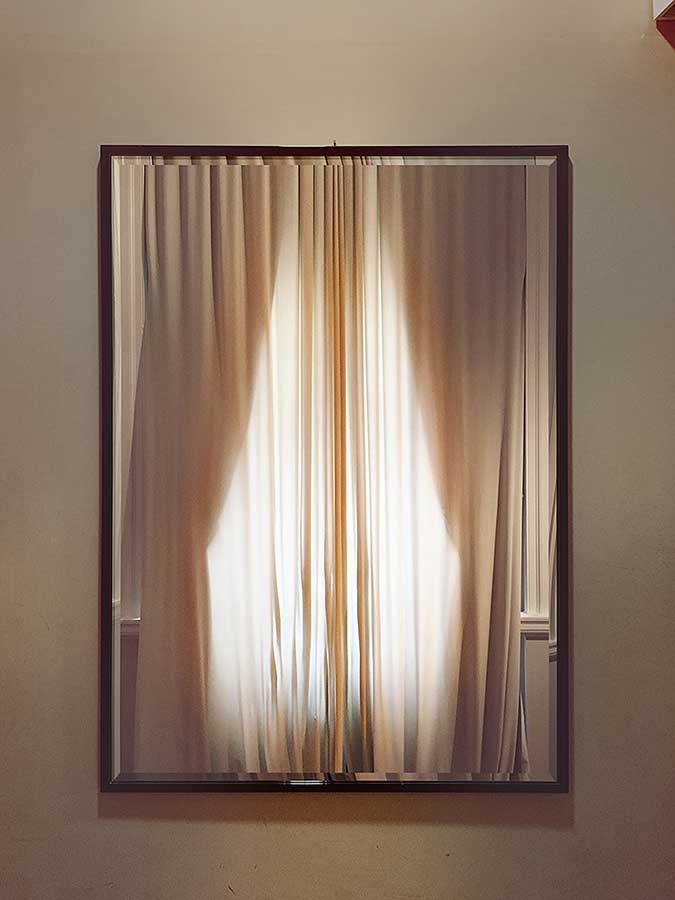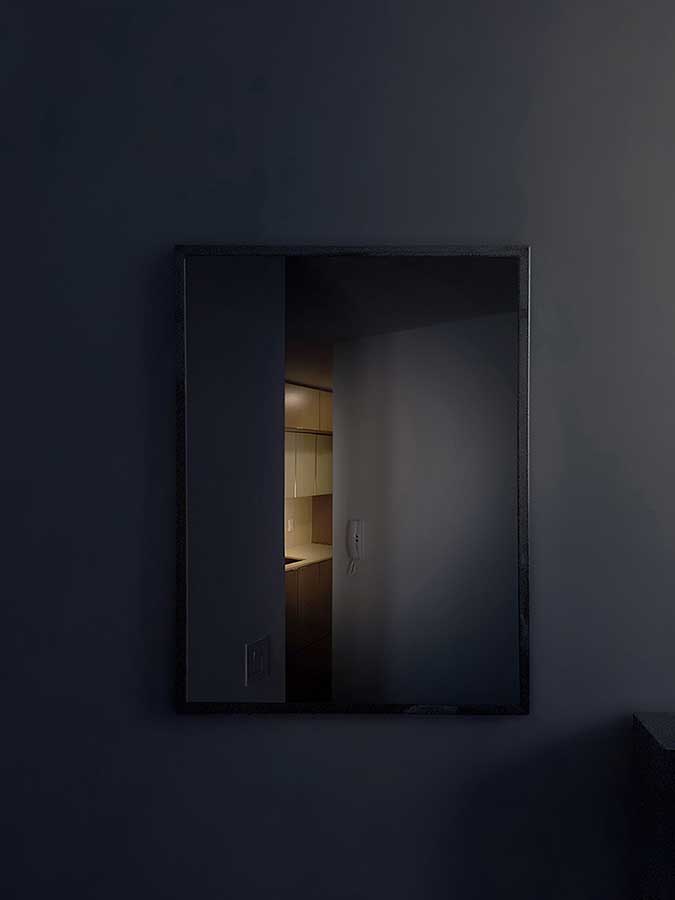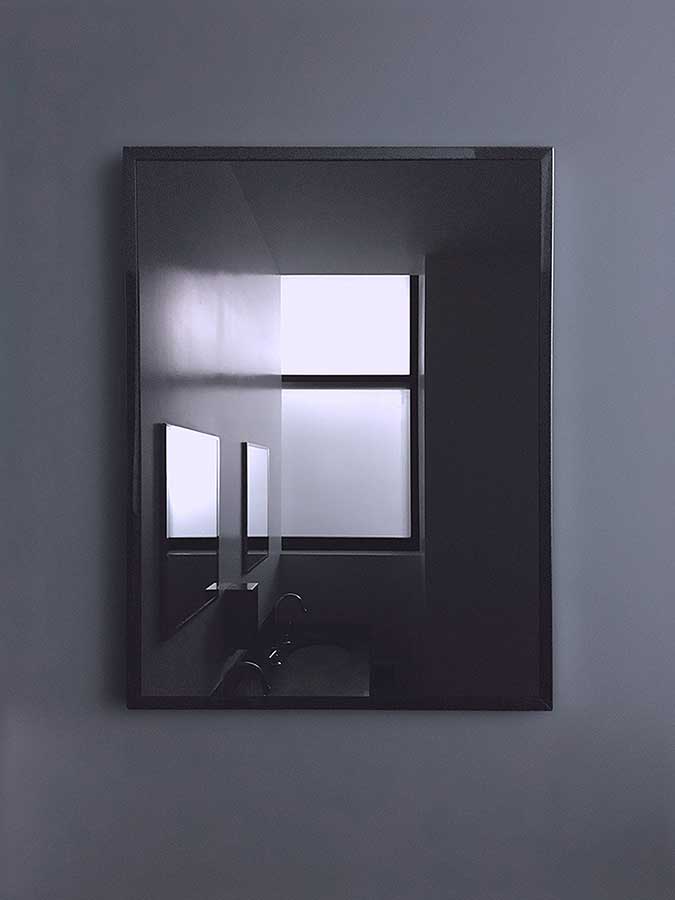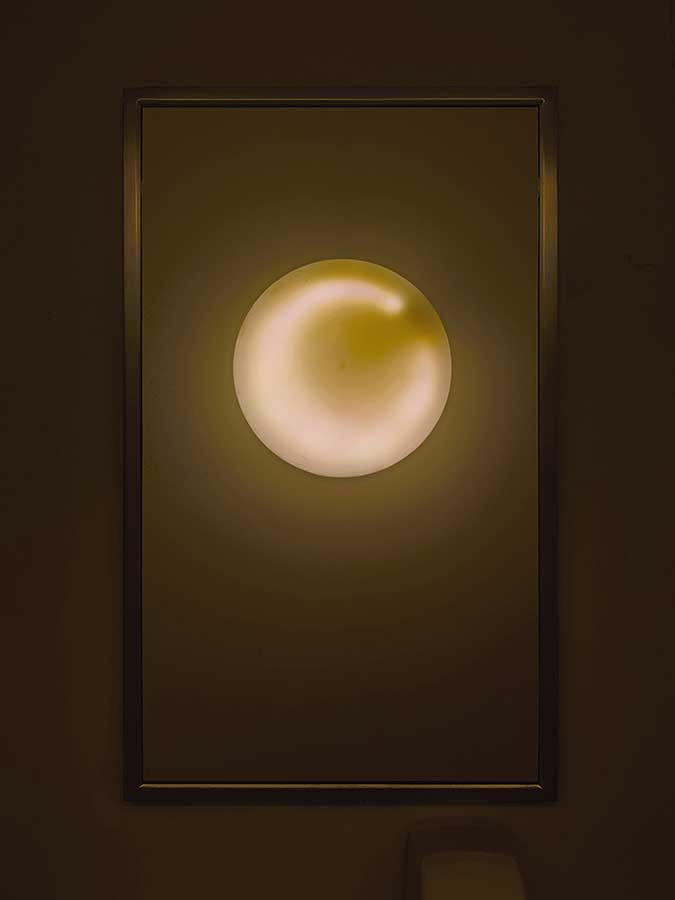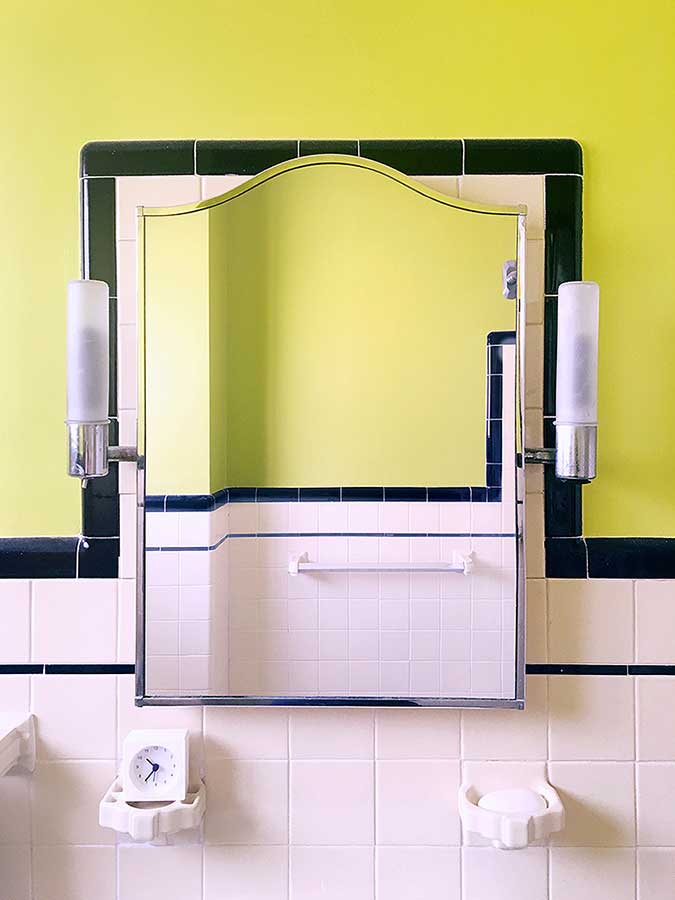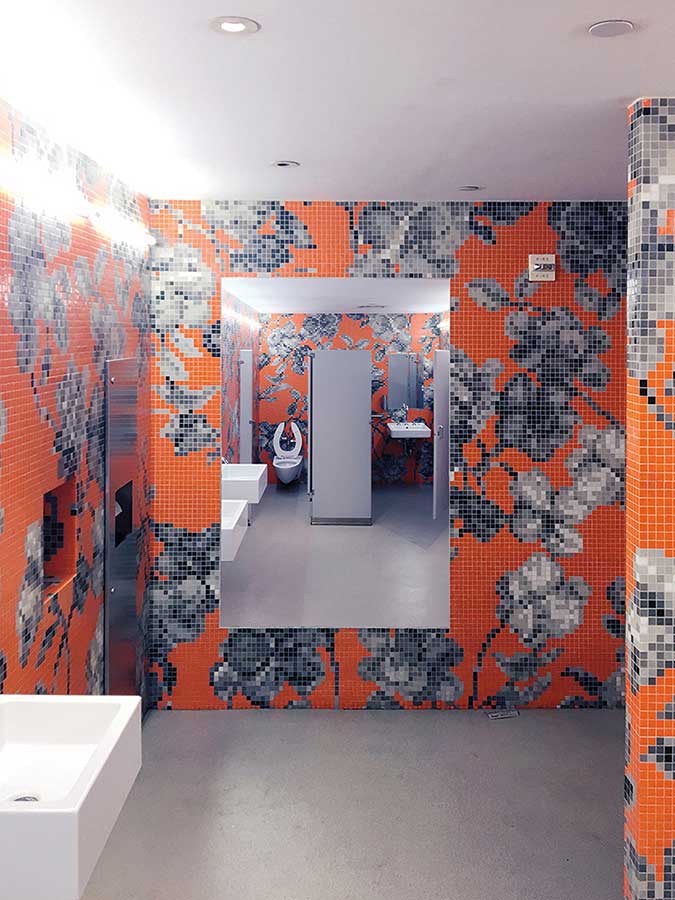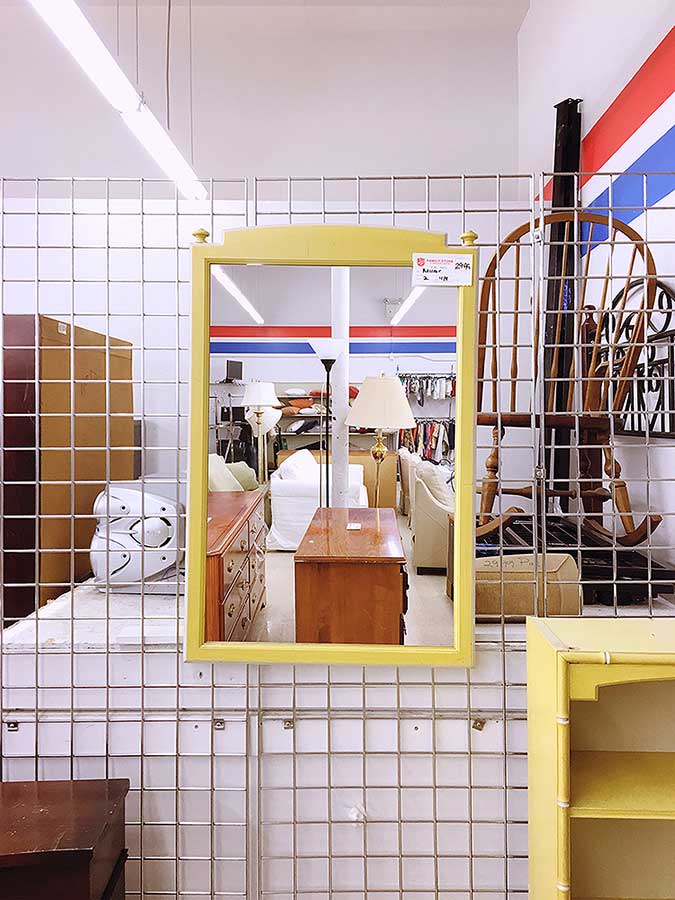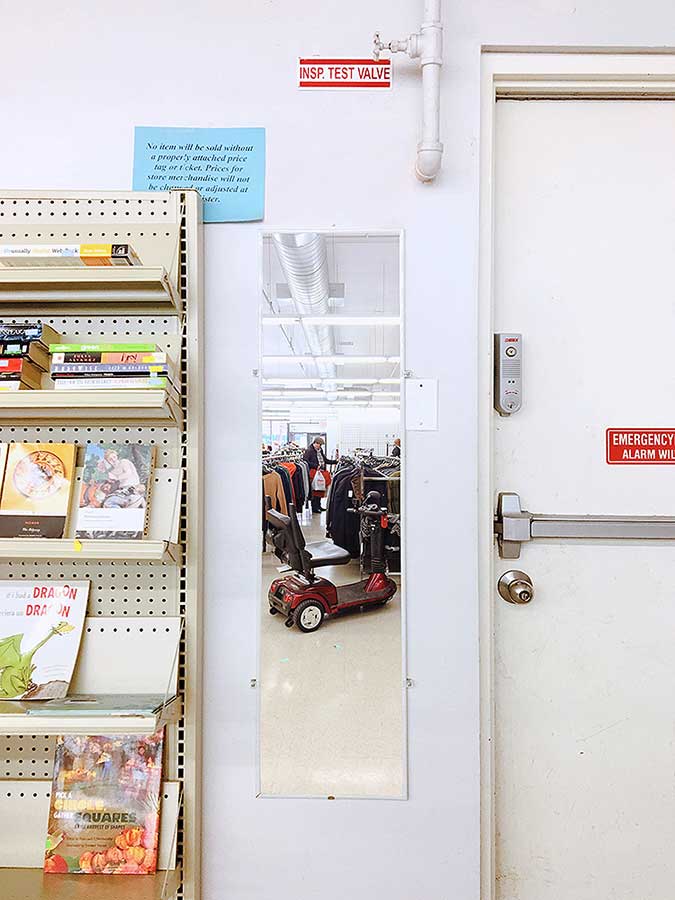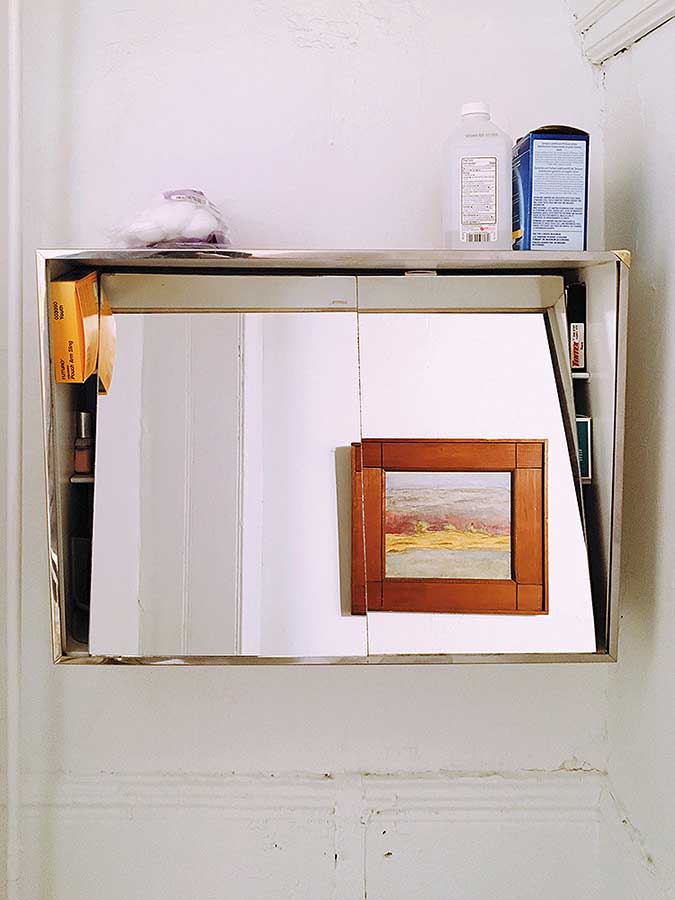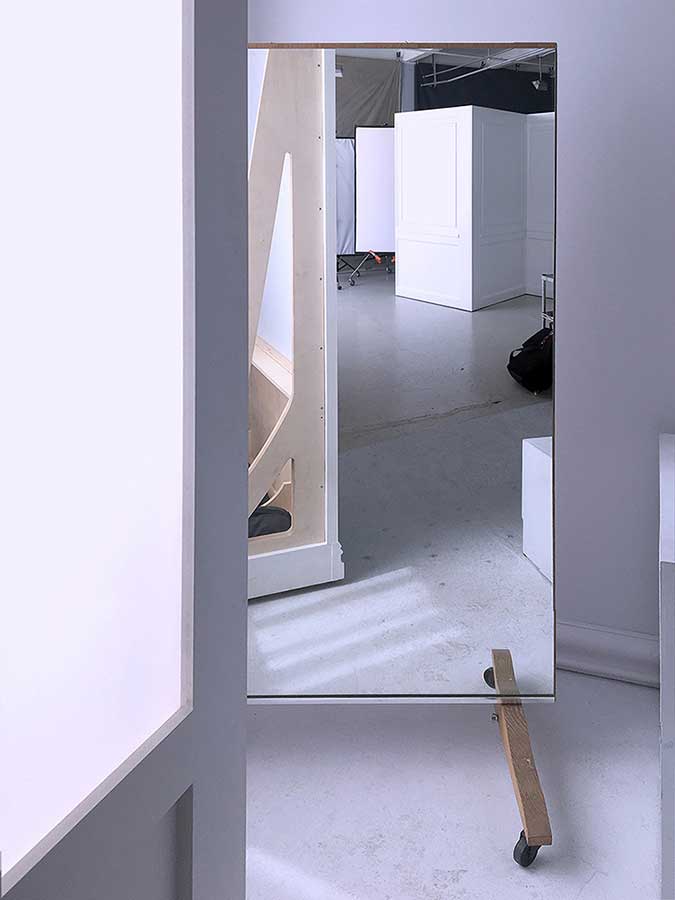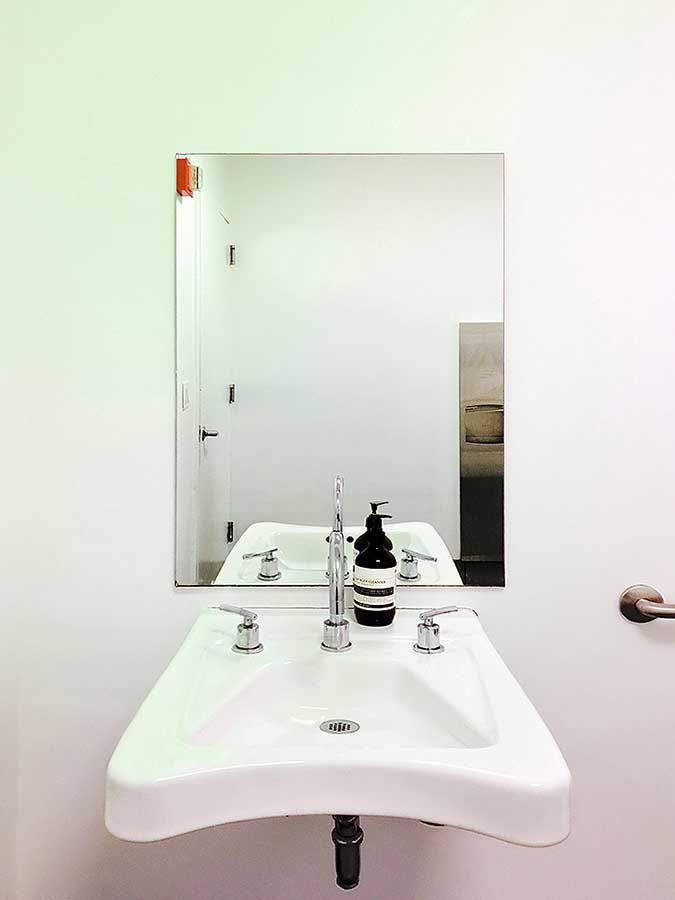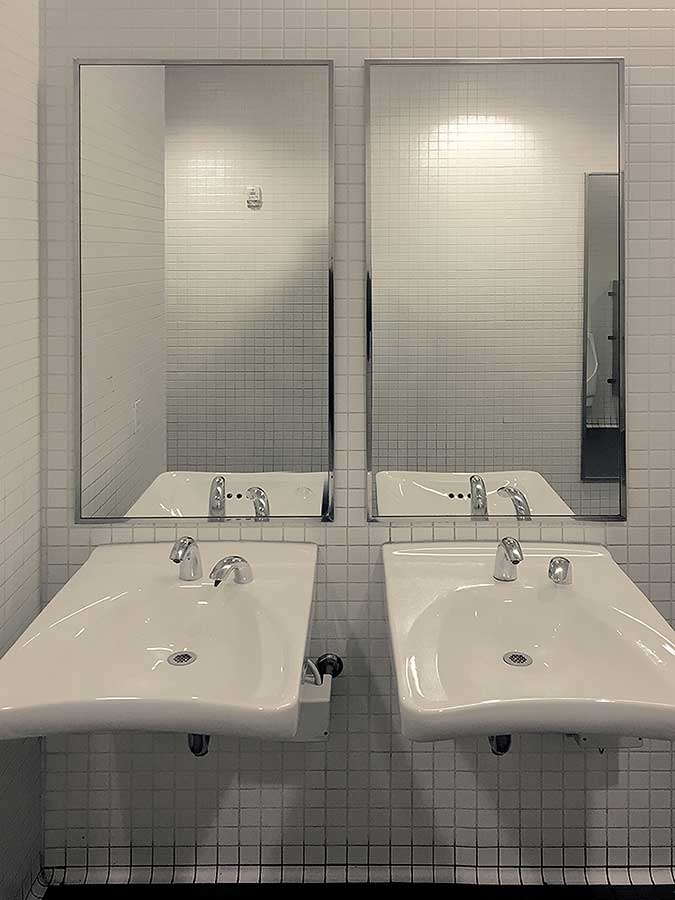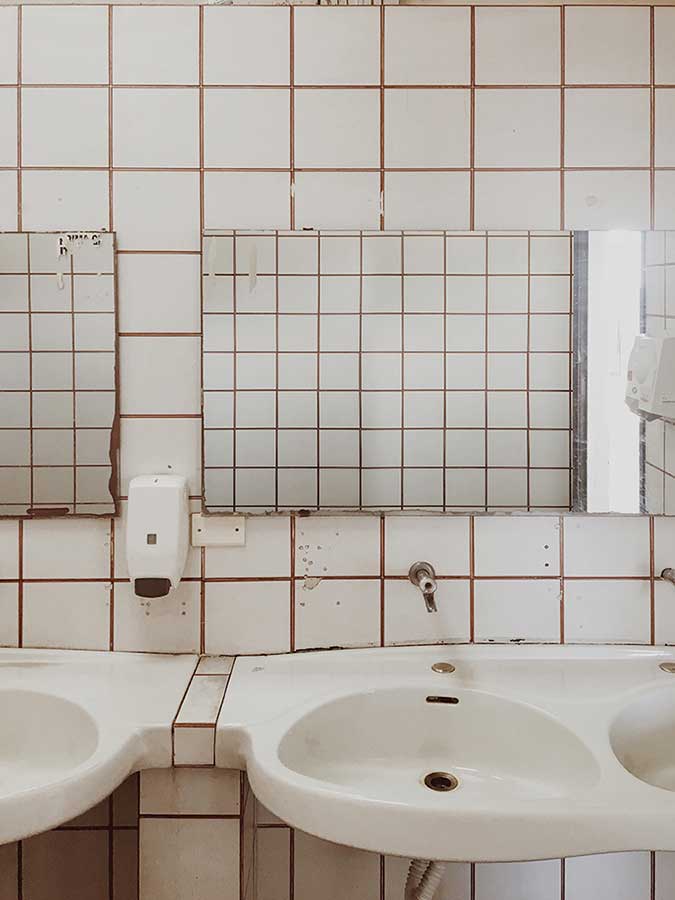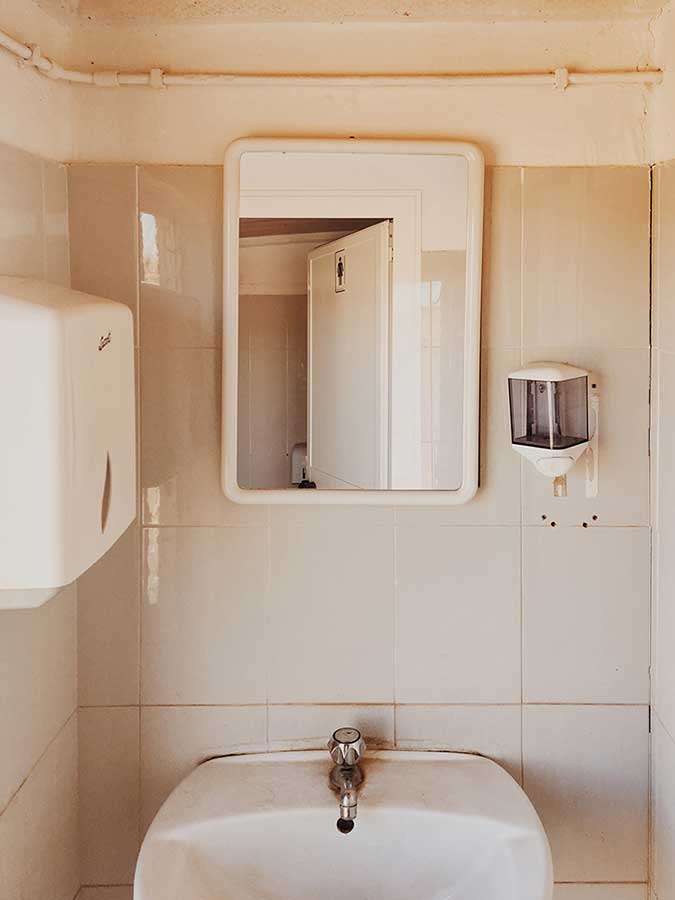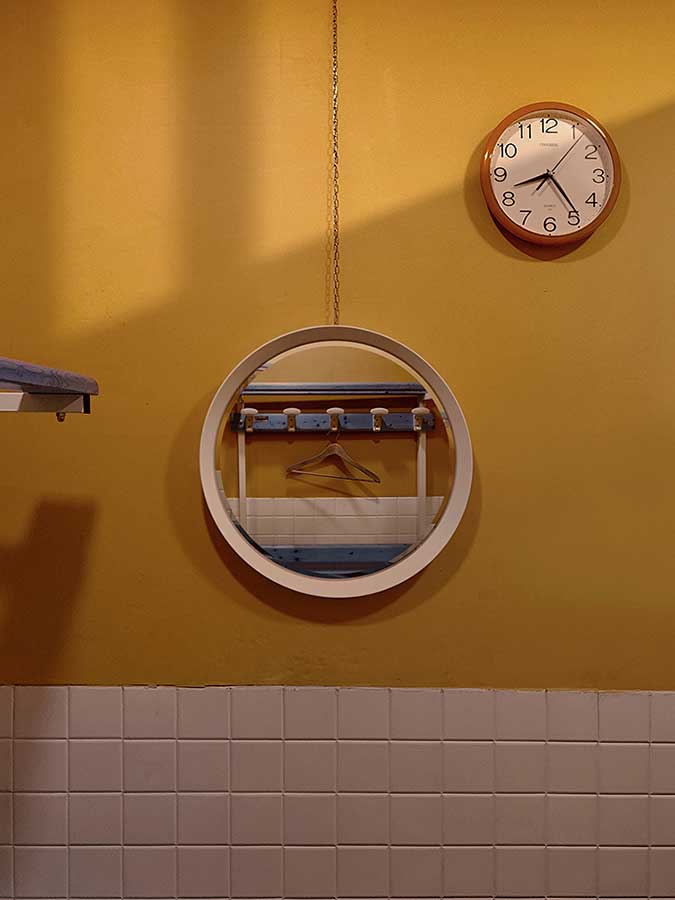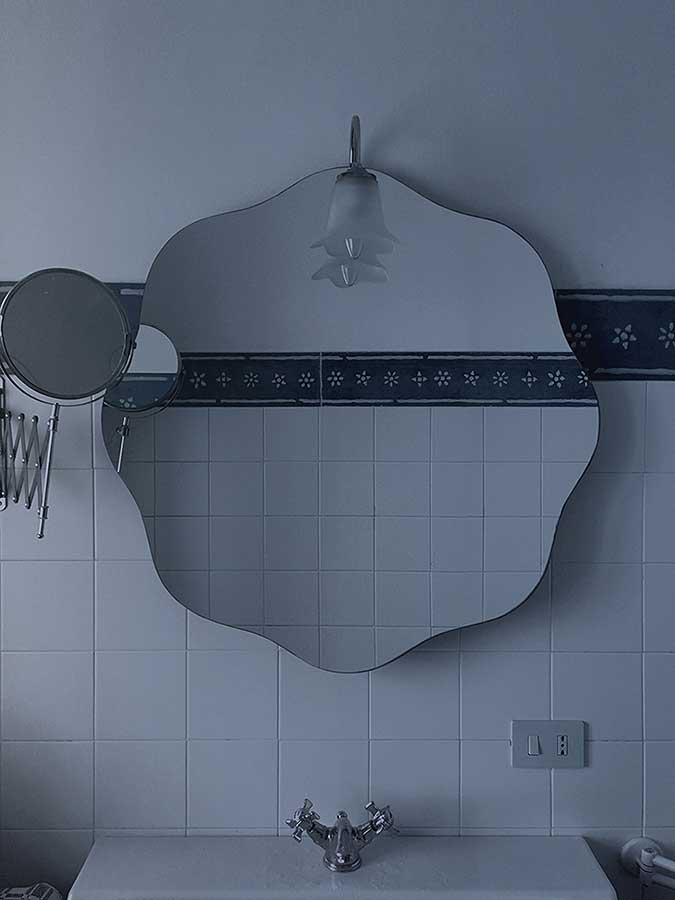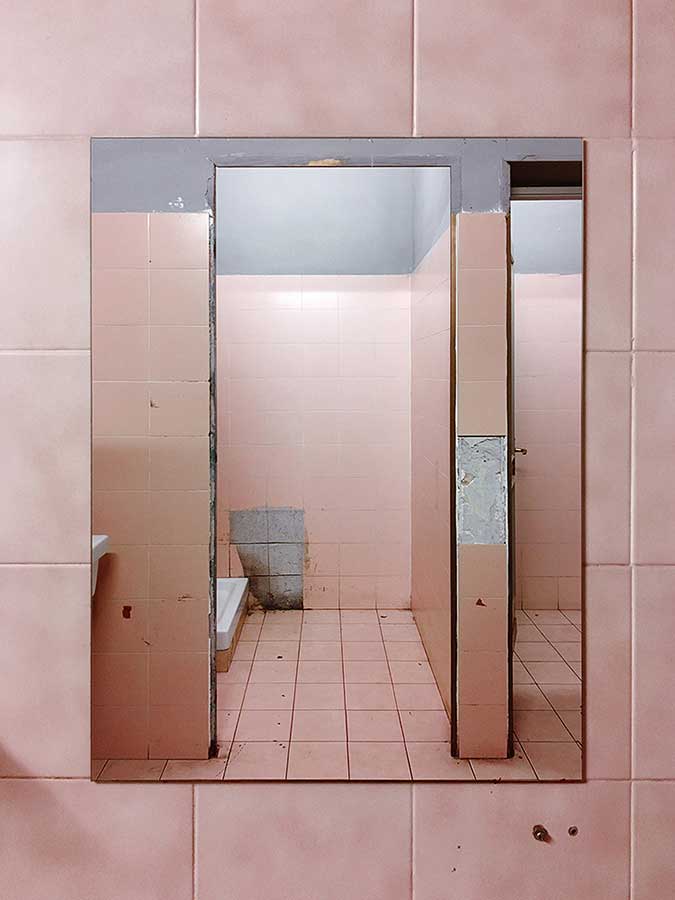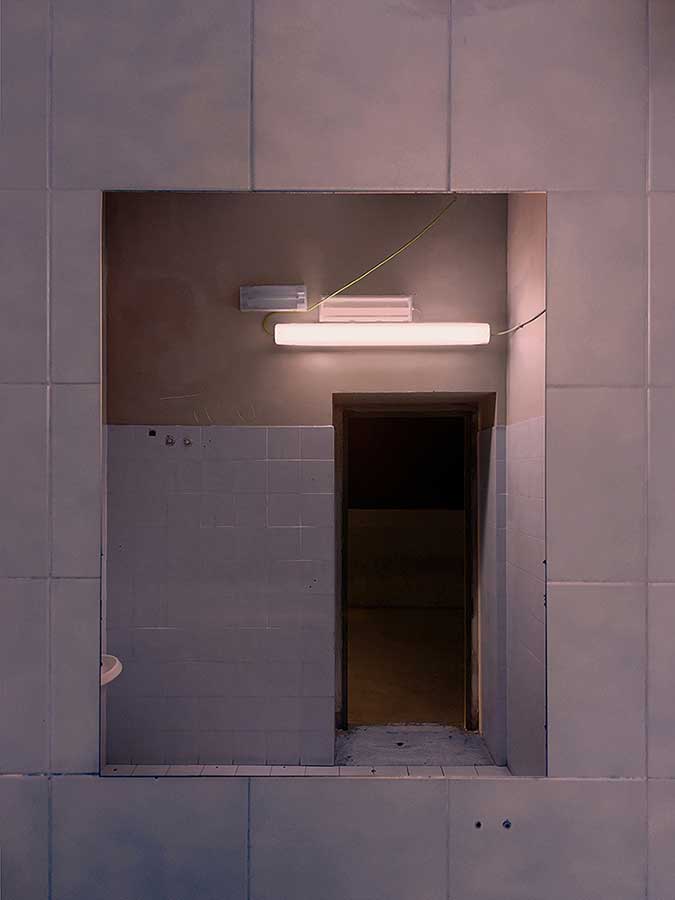The MeError project collects a series of short circuits, of visual errors. Apparently they are simple photos taken in front of a mirror:
We should see ourselves re ected in it, but we don’t, as if we were invisible. In other words these pictures show us what mirrors re ect when we are not in front of them. Real images, that exist in the world, but that we can never witness, for we are their own interference.
We should start by mentioning the writings of Jurgis Baltrušaitis on the matter of mirrors and mistakes. But it is the Heisenberg’s uncertainty principle that really comes at hand. e mere act of observing reality has already changed it, and that’s exactly what happens every time we step in front of a mirror: the image that was re ected a moment before is modi ed by our appearance. So, we will never be able to observe directly what a mirror shows when we are not in front of it. Only disappearing, we can observe reality without alterations.
e error, the disappearing of the self, the acknowledgment of ourselves as disturbing elements, the denial of our own image – almost a self-imposed iconoclasm, are all deep rooted elements. In my photography there is always the urge of taking pictures unseen, almost vanishing. e sensation of unease that some people feels in front of a camera is equally relevant. A discomfort that probably comes when we look at our own image, in which not always we can fully recognize ourselves.
us self-portrait and still life collide, creating images that are both the things and none at the same time. In fact, up to where is it legitimate to speak of portrait? Each one of these pictures premise it and the vertical format is clear about that. Yet is our very absence that triggers the mechanism of the image.
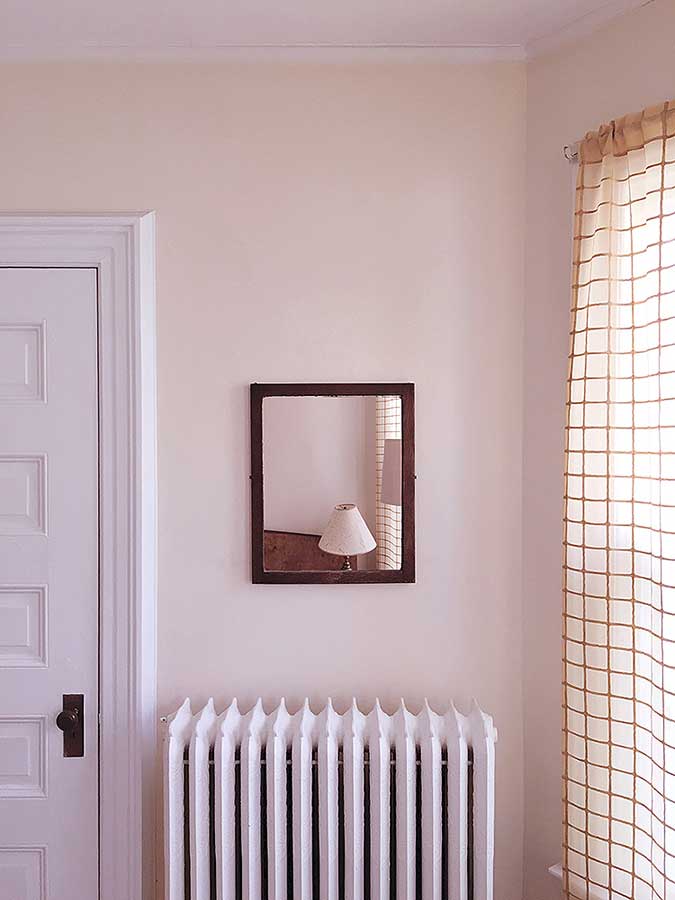
Of course the theme of the mirror has encountered the interest of plenty of artists within the centuries. Su ce it to mention the most renewed names. Trom Van Eyck to the disappeared Giorgione’s Saint George. From Parmigianino to Titian. From Rembrandt to the beautiful interpretation given by Foucault on Vélazquez. Speci cally though, La Reproduction interdite by Magritte and Absent Image by Sylvia Plimack Mangold are the real basis from which the MeError series grows. In both the paintings there is a plain, simple and almost academic aesthetics. at is in order to help the comprehension of the image and to make the visual short-circuit immediately clear and understandable – a more abstract approach would have compromised such clarity and would have thus required a slower and more analytical reading of the painting.
It is for all these reasons that the MeError photography series initially adopts a sharp, clear approach. An approach that allows the observer to immediately understand the mechanism of the pictures. Only then, we arrive to more unreal and metaphysical atmospheres.
Finally it is important to discus the legitimacy of manipulating the images. Even if his words do not refer to digital photography, on the matter I like to quote Todd Hido: “I shoot sort of like a documentarian but I print like a painter. All my stu is shot with natural light on a tripod. Untouched, and unstaged […] In the darkroom I’ll twist it all around in anyway I nd that works that still feels real to me.”
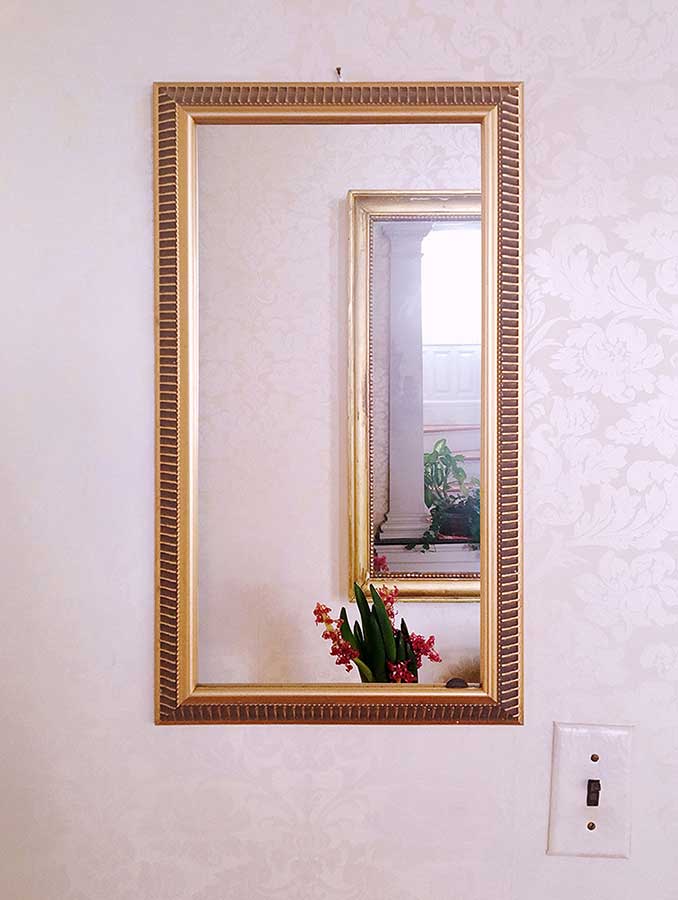
About Leonardo Magrelli
Born in Rome in 1989. Holds a bachelor’s degree in Design from “La Sapienza” university in Rome (class of 2012, full marks and high honour). Currently studies Art History in “Roma Tre” university in Rome, to get his second bachelor’s degree. Mainly involved in visual arts, with focus on photography and editorial graphic design, in 2010 starts working with the photographer Marco Delogu, director of Fotografia – International Rome’s Photography Festival, and chief editor of the publishing house Punctum Press. Aside from collaborating with the organization of the festival, Leonardo designed most of the books published by Punctum Press. Almost at the same time, in 2011 starts collaborating with the graphic and book designer Riccardo Falcinelli. In his studio, Leonardo has the chance to work with the most renewed italian publishing houses, such as Einaudi, Laterza, Minimum Fax, Carocci and others. In 2014 starts working on his own, to put more efforts in his own projects, and devote more of his time to photography. [Official Website]
